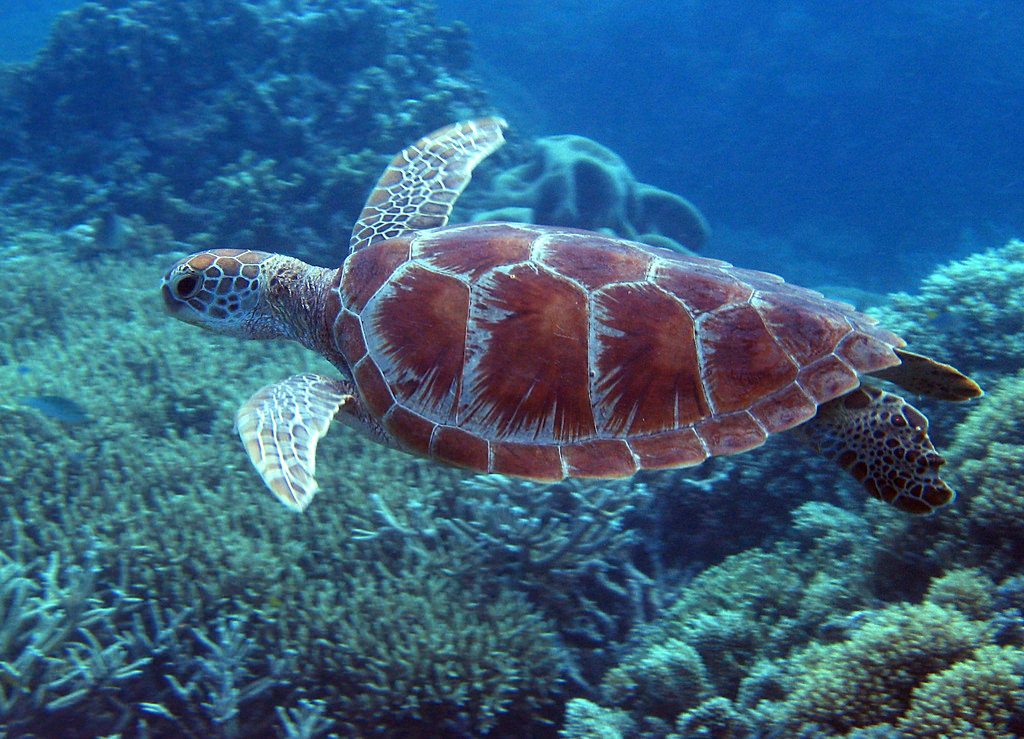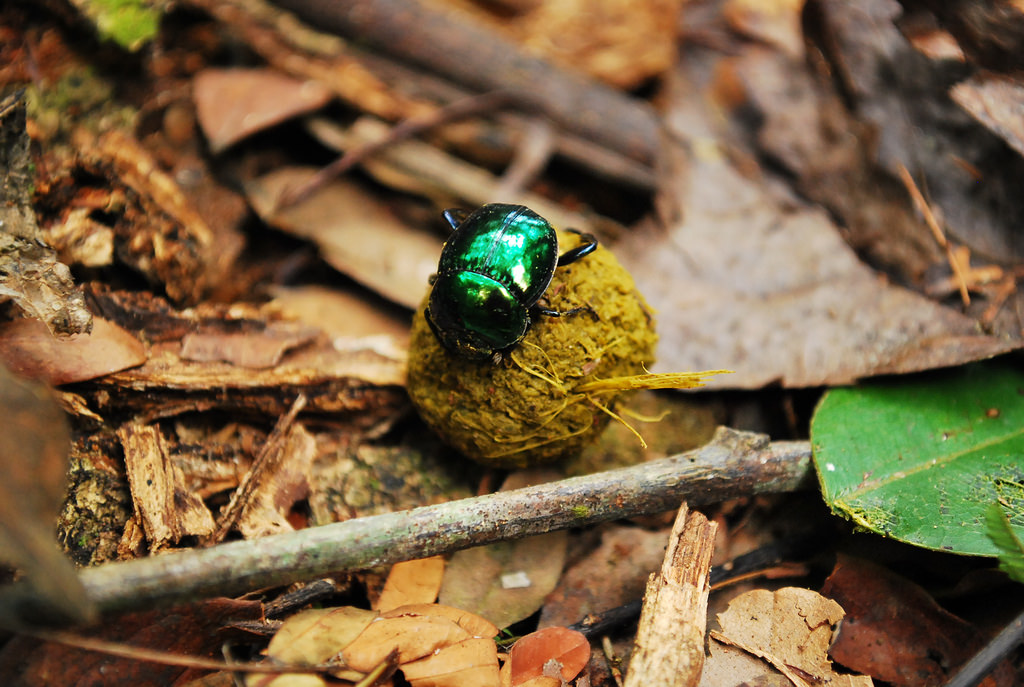Why we need to value biodiversity in the Anthropocene
As traditional conservation approaches struggle to prevent the widespread loss of species and wild habitats, one potential solution gaining in popularity is to place values on the benefits that nature provides for humans – what scientists call ecosystem services. Proponents of this “Natural Capital” movement argue that putting a price tag on ecosystems like Yosemite Valley or the Great Barrier Reef could help to harness the power of capitalism for their conservation.
But researchers Nathalie Seddon and Rachel Cavanagh say that such an approach may be too reductive. Seddon, from the University of Oxford, and Cavanagh, of the British Antarctic Survey, recently guest edited a special feature of the journal Proceedings of the Royal Society B called “The value of biodiversity in the Anthropocene.” They say that typically, initiatives around valuing nature tend to consider particular ecosystem services, and not the wide diversity of animals, plants and other organisms that give rise to these benefits. Their worry is that this lack of focus on biodiversity can lead to greatly underestimating the true value of what nature provides for humans and how much they depend on it.
Seddon and Cavanagh sat down with Future Earth to discuss their special feature, which brings together new research on the vital role that biodiversity plays in sustaining the range of benefits that ecosystems provide for humans – from clean water and air to the fish that people eat.
Daniel Strain: The concept of valuing nature seems to be gaining momentum. But it’s also controversial. Why is that?
Nathalie Seddon: Ethically speaking, there are those who view economic valuation as reductionist and utilitarian and strongly believe that nature should be conserved for its own sake. On the practical side, some argue that because it is impossible to place a value, monetary or otherwise, on all the benefits we derive from nature, we risk under-valuing and losing what’s really valuable to us.
Rachel Cavanagh: While one can empathise with these perspectives, the arguments are ultimately semantic and are hindering not helping the development of new approaches.

Much of Australia's Great Barrier Reef is threatened by coral "bleaching," a phenomenon that will have severe impacts on the diversity organisms that live in this ecosystem, including sea turtles. Photo: Stuart Hamilton via Flickr
DS: So what are the arguments in favour of putting a value on nature?
NS: Traditional conservation methods are failing: Despite bold international commitments and more protected areas now than ever before, biodiversity is being lost at increasingly high rates. So, there is growing agreement that new solutions are required. Natural capital valuation is one such approach and is gaining traction across the public and private sector where it provides a meaningful framework to consider nature in decision-making.
RC: As scientists, I think we have a responsibility to provide information about the benefits of investing in biodiversity to the business community and governments. But we’re advocating valuation as being complementary to traditional methods, not to replace them. So, for example, it is important to be able to capture the value of retaining a protected area against the costs of losing it. Methods and tools to estimate such values are becoming increasingly robust and more widely available.
NS: However, the current focus is to place monetary values on key ecosystem services rather than biodiversity per se, and this needs to change.
DS: You write that there is a growing consensus among scientists that biodiversity loss harms the functioning of ecosystems. At the same time, there are also uncertainties regarding whether the links between biodiversity loss and ecosystem functions shown in the lab apply to the real world. Can you explain why these links have been difficult to illuminate?
Black-browed albatrosses (Thalassarche melanophris) spend a lot of their lives on the ocean. Assessing the value of such marine life can be difficult. Photo: Susie Grant, British Antarctic Survey
NS: These links are difficult to demonstrate in the marine environment because much of it is remote and out of reach. Meanwhile on land, until fairly recently, most studies were small scale and biased towards measuring the impacts of a single dimension of biodiversity, such as species richness, on a single ecosystem function, often biomass production. The question has been whether findings from these kinds of studies apply more broadly.
However, there is now a growing body of evidence that they do, and in the special feature, we bring together some of the latest research on this. For example, a long-term study of lowland tropical rainforests indicates that more species-rich plantations are better able to withstand stress caused by climate change and disease. Other studies in the volume highlight the importance of animal diversity.
DS: You also introduce a new term “biodiversity services,” which takes into account how biodiversity underlies all of the services that humans get from nature. Why is this concept important for making decisions about conserving natural areas?
RC: Part of the problem is the confusion surrounding what is meant by “biodiversity.” Some consider it as one of nature’s services. But, in fact, biodiversity is the stock from which goods and services flow and on which those services depend. The term “biodiversity services” refers to all the ecological processes that underpin all that is directly and indirectly valuable to us, both now and in the future.

A tropical forest canopy in Ulu Temburong National Park in Brunei. Photo: Baron Reznik via Flickr
As an example to illustrate this, let’s think about a forest ecosystem. Highly diverse forests are much more likely to provide goods and services. This includes their capacity to store carbon and regulate water cycles. And, as Nathalie was just saying, it is the diversity of trees that also stabilises the forest ecosystem, increasing its ability to cope with things like disease or a variable climate. But this diversity is only made possible by processes such as the pollination of flowers and dispersal of seeds by numerous specialised species. Although much of the diversity of microbes, pathogens, insects, birds and mammals in a forest system is not directly generating services to humanity, it is supplying something more fundamental by allowing the ecosystem to regenerate in perpetuity, and to withstand and recover from disease and environmental change.
The concept of biodiversity services helps address the problem of only valuing particular aspects of an ecosystem. If we only value, say, a particular fished species or a commercial timber tree species, we can end up greatly undervaluing what we have and what we depend on.
NS: One thing that we also wanted to emphasise is that in recognising biodiversity as the stock of living natural capital from which all other values derive, we avoid some of the more dangerous narratives that are emerging about biodiversity.
DS: What sort of dangerous narratives?
NS: An important example is human-wildlife conflict. By thinking of biodiversity as an ecosystem service, rather than as the stock of living natural capital, people can tend to conflate the term with wildlife, such as elephants. Elephants do cause an awful lot of damage to crops and property, and they’re a serious problem for many communities. But the ecosystem that sustains the elephant population brings enormous benefits to people. That includes clean water, climate regulation, soil fertility and, possibly, the pollination services on which food and water security ultimately depend. But the danger with misunderstanding biodiversity in this way, such that it becomes simplified to wildlife or even to individual species, is that it can start to be perceived as “bad for us."
DS: Which brings up a concern that several studies in this special feature raise – that often it’s the big animals, the wildlife, that are the first to disappear from ecosystems. They also can be some of the most important animals for keeping ecosystems healthy. Why is that?
NS: In rainforests, it's the large-bodied mammals or birds that disappear first, either because they’re targeted by hunters or because they’re very specialised and, therefore, don’t cope well with activities such as selective logging. Some of these animals play important roles in the ecosystem – large birds are often the primary dispersers of fruit and seeds for many tree species, especially large value timber species. Once these large birds are lost from the forest, these tree species are unable to disperse.

A dung beetle rolls a ball of dung in the Amazon. Photo: Paulo B. Chaves via Flickr
Similarly, large bodied mammals are an important source of dung for dung beetles, which are themselves important for the burial and germination of seeds. If we lose these mammals, this affects the dung beetles, which in turn determines whether the seeds germinate.
RC: So, the removal of these kinds of species from the ecosystem can have a massive impact on its ability to function and, ultimately, to produce all these services on which human wellbeing depends.
DS: So you want to see more of an emphasis on valuing biodiversity, rather than natural resources, such as fisheries or food crops, on their own?
NS: Definitely. There is a lot of work to be done in making ecosystem science and biodiversity science more fully engaged with the natural capital movement, so when valuations are made, they take into account these more hidden values – these extra services that are provided by ecosystems and that benefit human societies around the world.
DS: Is this a consideration that can be included in international sustainability efforts?
RC: Exactly. What we want to convey is the need to get biodiversity to the heart of these efforts. If we conserve biodiversity, we address many of the Sustainable Development Goals. Biodiversity is the glue that can and should bind these international agreements.
NS: In other words, rather than viewing biodiversity as a vulnerability, it needs to be recognised as a major source of resilience to climate change and disasters, and the key to poverty alleviation, food security, health and wellbeing. There is much science in place to support this view. It’s not about having a utilitarian approach to conservation. It’s about placing healthy ecosystems where they belong, at the centre of the sustainability agenda. Only when this happens will we see significant improvements in the state of our planet’s biodiversity.
Nathalie Seddon is Professor of Biodiversity at the University of Oxford in the UK and a Visiting Fellow at the International Institute for Environment and Development (IIED), London, UK. Rachel Cavanagh is an ecosystem scientist at the British Antarctic Survey, Cambridge, UK, and the Executive Officer of Integrating Climate and Ecosystem Dynamics in the Southern Ocean programme (ICED), a regional programme of Integrated Marine Biosphere Research (IMBeR). IMBeR is a global research project of Future Earth. Together they guest edited the special feature of Proceedings of the Royal Society B, to which other scientists from the IMBeR network also contributed. You can learn more about IMBeR here.
DATE
July 26, 2017AUTHOR
Daniel StrainNathalie Seddon
Rachel Cavanagh
SHARE WITH YOUR NETWORK
RELATED POSTS
Spotlight on LMICs – Tired of Breathing in Pollutants? Time for Better Fuel Economy and Vehicle Standards
Future Earth Taipei Holds 2024 Annual Symposium
Spotlight on LMICs – The Future’s Juggernaut: Positioning Research as Anchors for Environmental Health